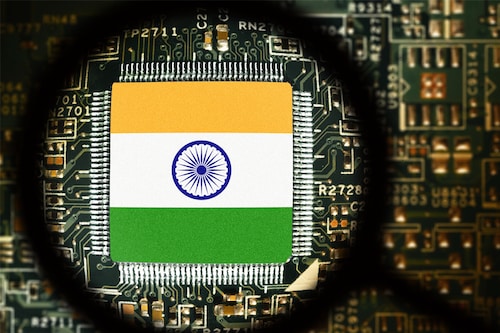India's semiconductor dream gets a push as PM lays foundation for three manufact
After US-based Micron, India's Tata Group and Murugappa Group commence ground-breaking ceremonies for facilities in Gujarat and Assam


On March 13, Prime Minister Narendra Modi virtually initiated ground-breaking ceremonies for three semiconductor projects worth about Rs 1.25 lakh crore. During his address, PM Modi admitted to having missed the bus all these years, but now there’s no room to waste time and catch up with other countries on semiconductor manufacturing.
He laid the foundation for the semiconductor fabrication facility at the Dholera Special Investment Region (DSIR), Gujarat, and the Outsourced Semiconductor Assembly and Test (OSAT) facility at Morigaon, Assam, and Sanand, Gujarat.Tata Electronics Private Limited (TEPL) will be setting up the Dholera and Morigaon units. With a total investment of over Rs 91,000 crore in the Dholera facility, this will be the first commercial semiconductor fab in the country. The company will be investing Rs 27,000 crore in the OSAT facility in Morigaon. During the 10th Vibrant Gujarat Global Summit in January, Tata Sons Chairman N Chandrasekaran announced the Gujarat unit and said that the operations are expected to commence this year. The company will be running it jointly with Taiwan-based Powerchip (PSMC).
PSMC will assist Tata Electronics in building India"s first 12-inch waferfab. They also plan to produce power management integrated circuits, display driver ICs, microcontrollers, and high-performance computing logic in order to enter the automotive, computing and data storage, wireless communications, artificial intelligence, and other application end markets.
“We will create more than 50,000 jobs, and this is just the beginning," Chandrasekaran said during the ground-breaking ceremony today. “Chip shortages during the pandemic made us realise our dependency on the international supply chain. A domestic semicon industry is integral to indigenous industry. Semicon chips have a defining role to play in every industry: Auto, AI, defence, green tech, health, and every other industry."
The second OSAT unit in Sanand will be set up by CG Power and Industrial Solutions Limited, with a total investment of about Rs 7,500 crore. The company is a subsidiary of Tube Investments of India Limited and part of the Murugappa Group. It recently signed an agreement with Japan"s Renesas Electronics Corporation and Thailand-based Stars Microelectronics to build and operate this OSAT facility. Both companies are well-equipped with advanced manufacturing technology.
![]()
India is eyeing the opportunity to grow into a $10 trillion economy over the next decade. By adding $1 trillion every 1.5 years going forward, the country is predicted to emerge as the third-largest global economy over the next six years, according to the latest findings by Boston Consulting Group and Matrix Partners. This will be driven by the manufacturing sector, which will contribute 32 percent to the incremental gross value added (GVA) that India adds by 2030. A significant portion of this manufacturing-led growth will come from sectors like semiconductors, electronics manufacturing, electric vehicles, renewable energy, and defence.
The semiconductor market is expected to grow at a 15 percent CAGR, from $44 billion to $117 billion by the end of the decade. India has the talent for fabless design but needs help from companies like Taiwan Semiconductor Manufacturing Company (TSMC) to manufacture chips until India has the capability to manufacture its own chips, explains Sudipto Sannigrahi, managing director of Matrix Partners.
“For semiconductor manufacturing, we don"t have the know-how. So we’ll need other global companies to come and set up their component supply chain and ecosystem that we learn from. Wherever there is no requirement for an advanced material supply chain or high-precision manufacturing, India already has the capability," he adds.

Ease of doing business and government incentives will play a major role in helping the semiconductor industry take off in India. Additionally, venture capital and private equity backing will also be needed because the government can only do so much, points out Sannigrahi. “If there has to be innovation among entrepreneurs, then VCs and private equity have to play roles."
The timing is just right for India, and it"s one of those golden phases when everything is coming together, shares Ishang Jawa, managing director and partner at BCG India. Many macro-economic dynamics favour India in terms of changing supply dynamics and trade relationships. “It"s a beautiful golden hour, which we have to really capitalise on. Because it"s very difficult for all these things to come together and present themselves to both entrepreneurs and the business world at large."
First Published: Mar 13, 2024, 14:19
Subscribe Now